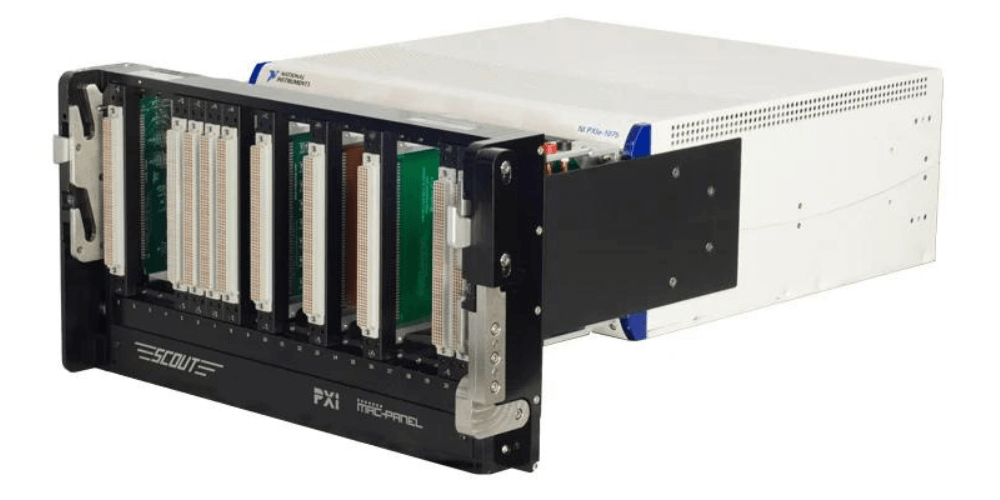When investing in the development of automated test equipment (ATE), you want to be sure you are not creating a system that is difficult to modify as changes to your test requirements or devices under test (DUTs) occur. Thus, it is wise to develop a system using a common core approach that is flexible, easy to reconfigure, and can interface to multiple types of DUTs.
While it’s easy to think about interchangeability and flexibility of the main hardware or software for these systems, one part of the common core development approach that is often overlooked is the connections used in the system. For example, if your system has 200 or 300 different connection points, making all of these connections using traditional cabling with many types of connectors is not practical, especially if you need to disconnect and reconnect the cables frequently to run different tests. Instead, when a lot of connections are necessary, a mass interconnect may be a better choice.
The Ins and Outs of Mass Interconnects
In short, a mass interconnect acts as the connector interface between test instruments and the DUT. Some of the biggest benefits of using a mass interconnect versus individual connection points in an ATE include the following:
- Easily make hundreds of connections without using massive amounts of cabling
- The connector contacts are more robust and made to be connected and disconnected thousands of times without wearing out
- It’s generally quick and easy to connect and disconnect DUTs
- There is a basis for standardization where the same test platform can support engineering and production testing
- Test load balancing is simple – i.e., if you have five testers and three tests to perform, you can allocate those testers to do different tasks depending on what the test load is at the time.

But, as with anything, there are some possible drawbacks of using mass interconnects to consider including the following:
- Usually a larger up-front capital investment, unless you are building 4 or 5 systems at once
- Possibility for resource availability conflicts during test development if only one station is being used
- Although these types of connectors are more reliable and robust in general, mass interconnects do introduce another potential failure point in the connector chain
G Systems engineers have many years of experience working with various mass interconnect manufacturers such as MAC Panel and Virginia Panel Corporation. There are a lot of considerations to take, thus, we specialize in helping customers determine the best design for their ATE to utilize all the advantages mass interconnects have to offer when appropriate.
